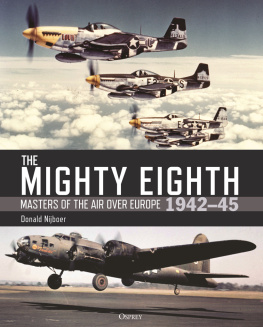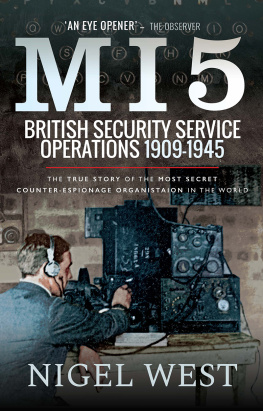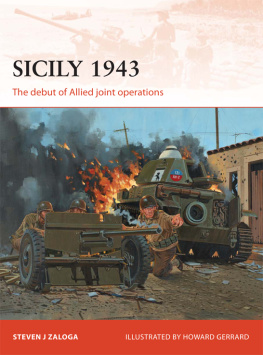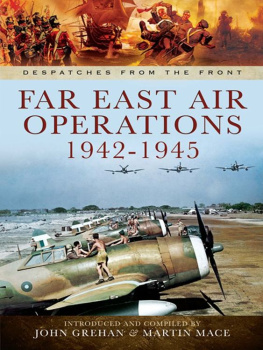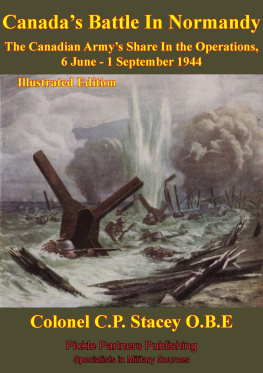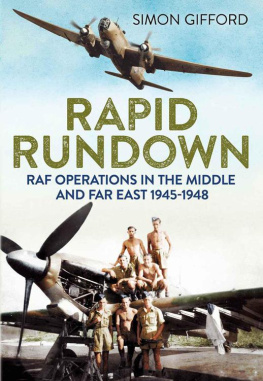This edition is published by PICKLE PARTNERS PUBLISHINGwww.picklepartnerspublishing.com
To join our mailing list for new titles or for issues with our books picklepublishing@gmail.com
Or on Facebook
Text originally published in 1989 under the same title.
Pickle Partners Publishing 2014, all rights reserved. No part of this publication may be reproduced, stored in a retrieval system or transmitted by any means, electrical, mechanical or otherwise without the written permission of the copyright holder.
Publishers Note
Although in most cases we have retained the Authors original spelling and grammar to authentically reproduce the work of the Author and the original intent of such material, some additional notes and clarifications have been added for the modern readers benefit.
We have also made every effort to include all maps and illustrations of the original edition the limitations of formatting do not allow of including larger maps, we will upload as many of these maps as possible.
Eighth Army Operations in Mindanao, 1945: A Model for Joint Operations
by
Joseph G. Terry, Jr., COL, IN
CHAPTER 1 INTRODUCTION
And he had in his hand a little book open: and he set his right foot upon the sea and his left foot on the earth. Revelation 10:2
Amphibious operations have historically straddled single service prerogatives and had been conspicuously avoided prior to World War II. Dr. Alfred Vagts, in a detailed study of landing operations from antiquity to 1945 noted:
Professional militarists of the past two and a half centuries avoided landings that were potentially decisive largely because they shunned cooperation and the inevitable subordination of one service to another. {1}
While lack of adequate technology and absolute necessity were also cited as reasons for the lack of successful amphibious operations prior to World War II, joint doctrine failed to provide adequate answers to the overall question of whos in charge and who would provide what to whom, where, when, and how. Yet, in the Pacific theater of operations during World War II, successful amphibious operations were abundant and decisive and generally regarded as models of joint service cooperation. Under the legendary General Douglas MacArthur, amphibious operations were synonymous with success and interservice cooperation.
General MacArthurs campaigns in the Phillippines in 1944-45 were especially noteworthy as models of a single, flexible strategy, unity of command, and joint service cooperation. In commenting on General MacArthurs Philippine campaigns, Lieutenant General Shichi Miyazaki, Chief of Operations Bureau, Imperial General Headquarters, stated:
Strategic plans, strategic preparations, operational decisionsthese were splendid. I came to the decision in Tokyo that the combined use of air, ground and naval forces and in general all war plans involving the cooperation of these three together were especially notable for their success. {2}
General MacArthur himself underscored the effect of joint operations on the particular success of the Leyte Gulf operations. On 31 October 1944, he said:
The magnificent coordination displayed by the services was as marked as the special tactical efficiency of the various branches. {3}
And later, placing the Phillippine campaigns in perspective and setting a standard for future joint operations, he released the following statement to the press:
The entire Phillippine Islands are now liberated and the Phillippine Campaign can be regarded as virtually closed
The enemy during the operations employed twenty-three divisions, all of which were practically annihilated. Our forces comprised seventeen divisions. This was one of those rare instances when in a long campaign a ground force superior in numbers was entirely destroyed by a numerically inferior force.
Naval and air forces shared equally with the ground troops in accomplishing the success of the campaign. Naval battles reduced the Japanese Navy to practical impotence and the air losses running into the thousands have seriously crippled his air potential. Working in complete unison the three services inflicted the greatest disaster ever sustained by Japanese arms. {4}
In 1943, the British Imperial Staff had profoundly declared:
Even in their respective spheres, the fighting services have always been incomplete and now they are often individually impotent. Today, all operations are combined operations. {5}
General MacArthurs experience in the Phillippines underscored their wisdom and provided a strong foundation for joint operations in the post war years.
Yet, curiously, forty-five years later, our national military experience in joint planning and operations has appeared to regress. In fact, regression was so noticeable that the Goldwater-Nichols Department of Defense Reorganization Act of 1986 forced jointness on the services. This act elevated the importance of the regional Commanders in Chief (CINCS), Joint Chiefs of Staff (JCS), and the Chairman of the Joint Chiefs of Staff (CJCS). It also bought a host of critics and criticisms; most of whom and which continue to question the wisdom of jointness and expanded Congressional oversight of joint planning and operations. Had we forgotten the lessons of General MacArthur and the Phillipines?
Recently, former Secretary of the Navy, John Lehman, stated in his book , In Command of the Seas: Building the 600-Ship Navy :
We have taken this idea of jointness to an extreme- it now hobbles everything we do. It will cost us the next war, too, should there be a major war with the Soviets. {6}
He was also disdainful of Pentagon rhetoric that joint duty would reduce interservice rivalry.
Interservice rivalry is a phenomena that exists primarily in Washington. When you go out into the fleet, you dont find sailors not working with soldiers from other services. The Air Force and the Navy exercise and work side by side all the time. If you just keep Washington the h out of the picture, theres no problem. {7}





